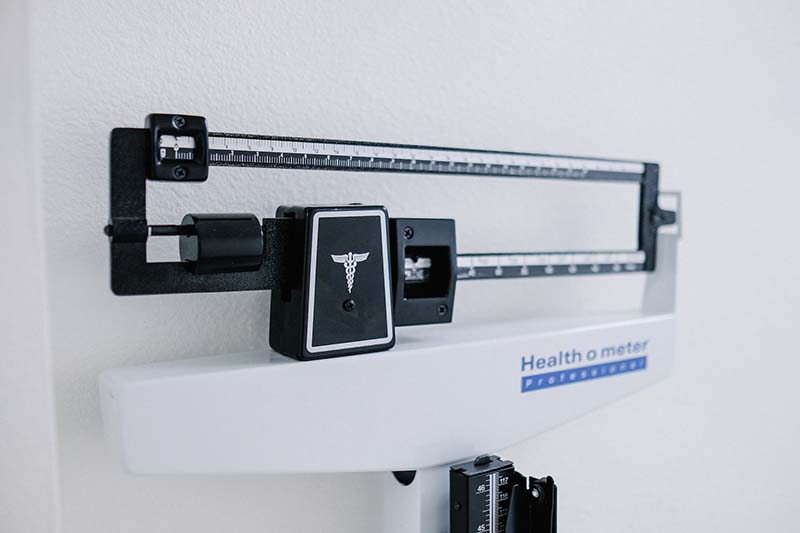7 Simple Fat-Loss Tips That Actually Work

Since 1980, obesity rates in the United States have doubled [1]. According to recent projections, by 2030, one in two Americans will be classified as obese.
What has caused this worrisome trend? It's not a decline in our collective willpower, or the fact that we simply ‘move less, and eat more’. There are a host of environmental factors which have made it tougher than ever to make healthy choices.
To accommodate urban sprawl, modern cities have been designed for cars, rather than pedestrians, making us more sedentary than ever. Processed, high-calorie foods have never been cheaper or more readily available. Gym closures during the pandemic made it harder than ever to stay active. And there’s so much confusing and contradictory weight loss advice on the internet that it’s hard to know who to trust or where to start.
Unfortunately, lamenting the systemic roots of obesity isn’t going to help you achieve your weight loss goals this year.
The aim of this article is to provide you with seven straightforward strategies to help you take control of your health, sidestepping the gimmicks and focusing on long-lasting change.
#1: Savor Your Meals
One of the simplest and most effective ways to reduce your caloric intake is to eat more slowly. When you eat too quickly, your brain doesn't have time to register that you're full, which can lead to overeating. Consider setting a timer for 20 minutes during every meal. Chew your food thoroughly and savor each bite. Take a drink of water between each bite to artificially slow you down. Not only will these tactics help you eat less, but they will also improve your digestion. The beauty of this strategy is its simplicity. It doesn't feel particularly restrictive, which means it’s sustainable. If you're curious to dive deeper into the benefits of eating slowly, check out this article.
#2: Focus on Fiber
Fiber is an essential nutrient that plays a crucial role in weight loss. It helps you feel full and satisfied, reduces cravings, and keeps your digestive system functioning properly. It also feeds the health-promoting gut bacteria in our microbiome. If you include plenty of high-fiber foods in your diet, you’re likely to eat less without even trying. Some of our favorite high-fiber options are raspberries, almonds, chickpeas, and popcorn. Read more about the benefits of fiber here.
#3: Embrace Routine
While it might sound boring, eating the same thing every day can be a very helpful fat loss strategy. When you have a set menu, you don't have to waste time or energy deciding what to eat, which can make it easier to stick to your plan. It can also help you avoid temptation and mindless snacking. Of course, it's important to make sure you're getting a variety of nutrients, so be sure to include a mix of different foods within your chosen meals. On Sundays, consider mapping out what an ideal week of food would look like. This – rather than your taste buds – can guide your grocery shopping and meal-prepping habits.
#4: Experiment With "Fat-Loss Sprints"
The idea of always being in a state of deprivation can be demotivating and unsustainable. Instead, consider committing to short periods of strict adherence to a fat-loss plan, followed by a “maintenance phase”. For example, you could commit to a strict diet and exercise plan for 4-6 weeks, followed by a more relaxed approach for the next few weeks. To make this easier, schedule your fat-loss sprints to occur at times when you have complete control over your environment, and don’t plan to eat out frequently. For instance, you wouldn’t want your fat-loss sprint to coincide with your vacation at an all-inclusive resort. This strategy can help you avoid burnout and make your weight loss feel more sustainable in the long run.
#5: Understand Emotional Triggers
It's important to distinguish between physiological hunger (when your body needs fuel) and psychological hunger (when you're craving something for emotional reasons). Why is it that you reach for a tasty snack right after dinner? Didn’t you just eat? Does your body really need the extra nutrients? For a week, consider keeping a food journal and writing down what your trigger was for eating. Was it boredom? Stress? The habit of having a snack while watching a show? Once you have a better understanding of your psychological triggers, you can work on finding healthier ways to cope.
#6: Try Time-Restricted Feeding
Time-restricted feeding is a type of intermittent fasting that involves eating all of your meals within a specific window of time each day. This can help reduce overall caloric intake and improve insulin sensitivity, which can lead to weight loss. However, it's important to note that time-restricted feeding is not appropriate for everyone and should be discussed with a healthcare provider. Learn more about intermittent fasting from Dr. Heather Gessling here.
#7: Take More Steps
Finally, one of the easiest and most accessible ways to stimulate fat loss is to simply walk more. If you have a smartphone, you likely already have an app that tracks your steps. Take note of your typical daily step-count and aim to increase it by 1,000. Whether those steps come from structured exercise, taking the stairs instead of the elevator, or parking farther away from your destination, they can make a huge difference in the long run. Not only will this help you burn more calories, but it can also improve your overall health and well-being. To learn more about step counts (do you really need 10,000?), check out this article.
Bottom Line
Losing fat can be a challenging and frustrating process, but it's not impossible. By implementing these easy fat loss tips into your daily routine, you can start making progress towards your goals. Remember, fat loss is a slow and steady process, so be patient and consistent, and celebrate your small victories along the way.
References
[1] Finucane, M. M., Stevens, G. A., Cowan, M. J., Danaei, G., Lin, J. K., Paciorek, C. J., ... & Ezzati, M. (2011). National, regional, and global trends in body-mass index since 1980: systematic analysis of health examination surveys and epidemiological studies with 960 country-years and 9· 1 million participants. The lancet, 377(9765), 557-567.
[2] Flegal, K. M., Carroll, M. D., Kit, B. K., & Ogden, C. L. (2012). Prevalence of obesity and trends in the distribution of body mass index among US adults, 1999-2010. Jama, 307(5), 491-497.














